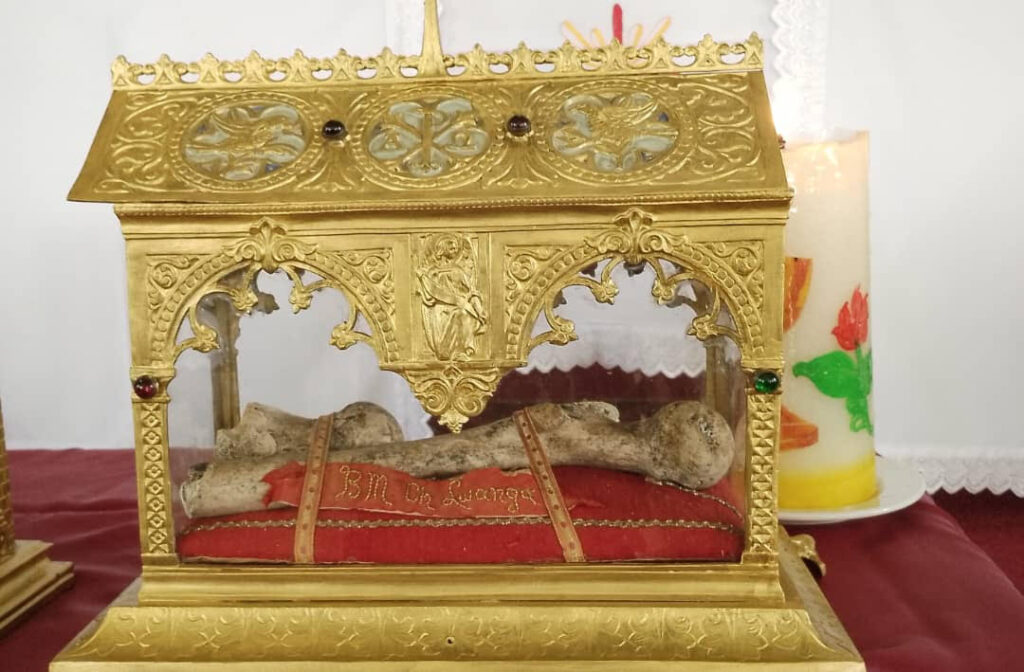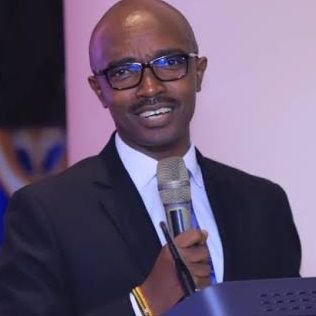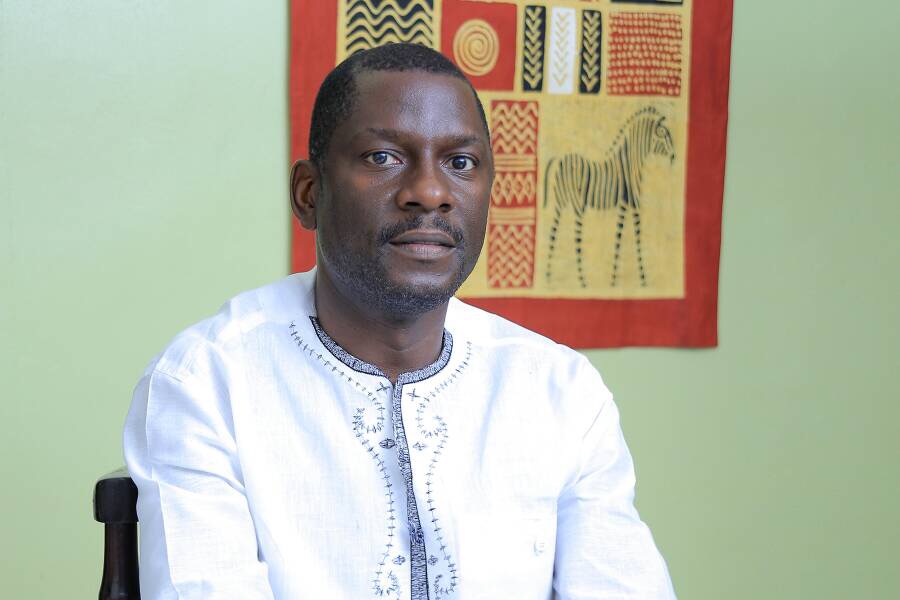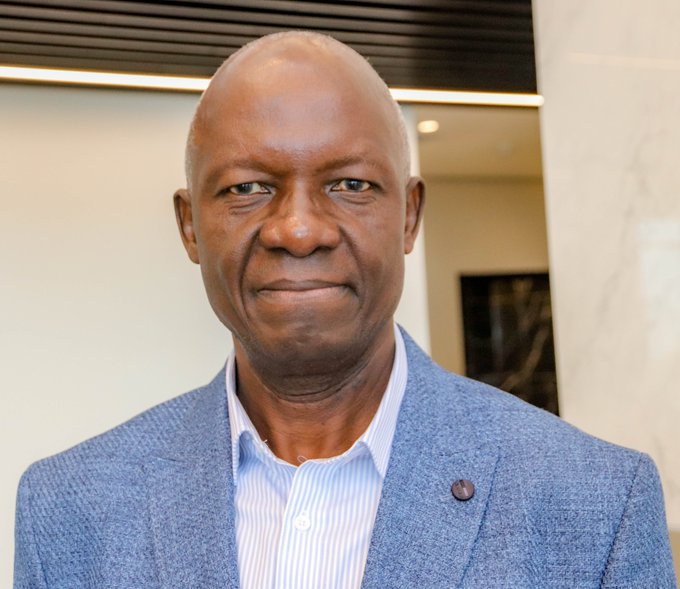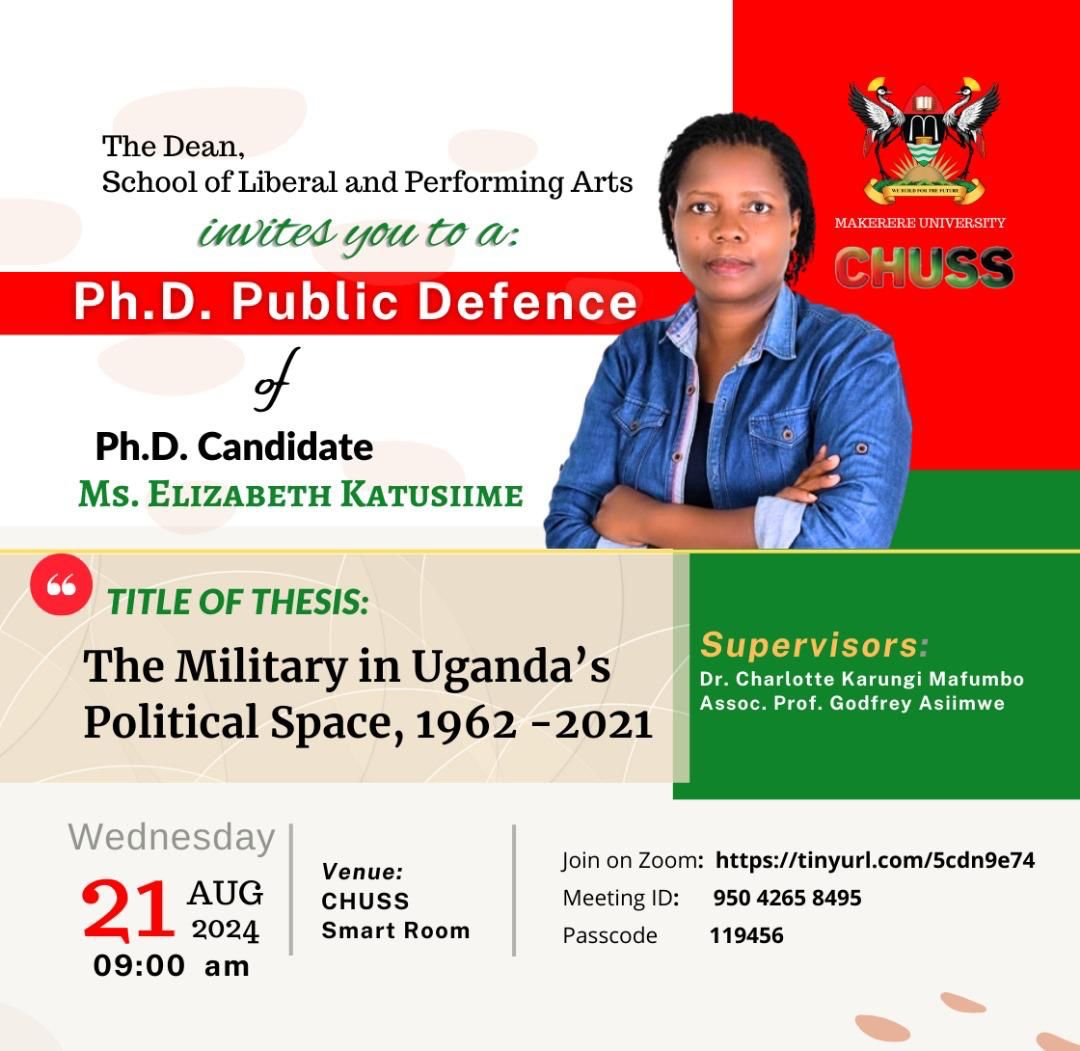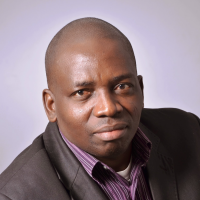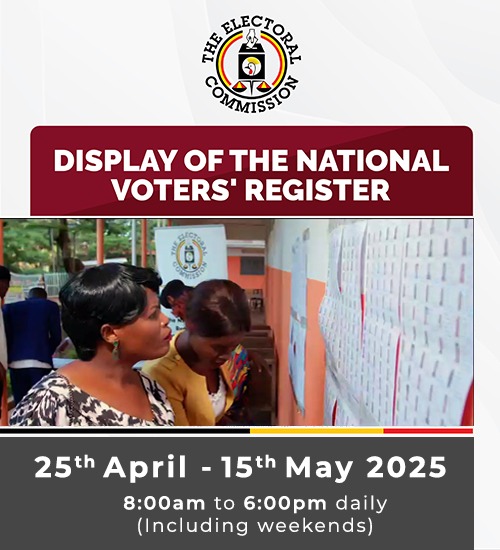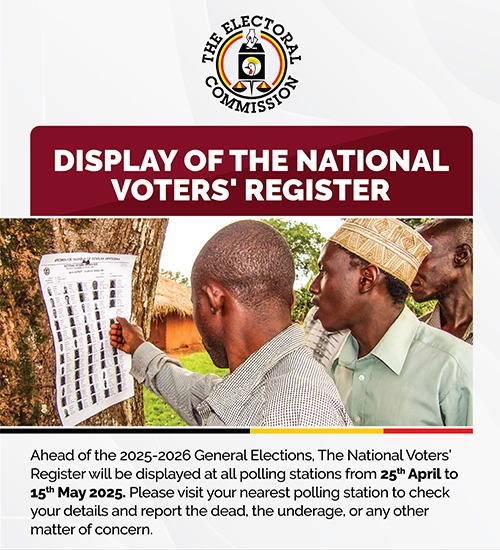KAMPALA- UGANDA: A jawbone belonging to St. Charles Lwanga, leader of the Uganda Martyrs who burned alive in Namugongo in 1886, will be exhibited to the public in a few hours from now.
Ugandans and key dignitaries are expected to throng Rubaga Hill this morning for a rare chance to view this relic that will be exhibited for the first time in 138 years.
St. Charles Lwanga and other compatriots were Christian converts in King Mwanga II’s Buganda Kingdom court at the time of their death.
He was burned alive from his feet upward in Namugongo in 1886, together with 21 other converts who were eventually canonized in 1964 at St. Peter’s Basilica in the Vatican, Rome, 60 years ago. This exhibition which will last 47 days before the relics are returned to Rome is themed God and Caesar.
Also on display will be a cross made from the Muvule tree to which St. Mathias Mulumba, his colleague, was tied before being brutally dismembered at the knees and elbows, dying in immense agony. Additionally, the exhibition will feature the iron chains that bound St. Balikudembe’s feet as he was led unresistingly to his martyrdom.
This significant exhibition, organized by Uganda Martyrs University Nkozi (UMU) in partnership with the University of Michigan, is set to feature rare and sacred relics that hold immense cultural and religious significance for Uganda and beyond.
The exhibition, which celebrates Uganda’s contribution to the global Christian faith, will see the temporary return of some of the most consequential relics of the Uganda Martyrs from Rome to their native land.
The landmark event celebrating both historical research and spiritual heritage, the God and Caesar exhibition marks the 60th anniversary of the canonization of the Uganda Martyrs, showcasing some of the most revered first-class relics in Christian history.
Alongside these sacred relics, the exhibition will present a rich collection of rarely seen archival documents, shedding light on the lives and deaths of the Martyrs.
Visitors will also view photographs and films documenting the momentous occasion when Pope Paul VI canonized the Uganda Martyrs on October 18, 1964, forever enshrining their sacrifice in the annals of the Universal Catholic Church.
The Story of the Uganda Martyrs
The martyrs, including Charles Lwanga, Mathias Mulumba, and 20 of their compatriots, were martyred between 1885 and 1887 for their unwavering commitment to their faith.
The church collected relics, such as bones and personal items, during the canonization process, sending them to Rome where they have remained ever since.
The Uganda Martyrs were canonized by Pope Paul VI in 1964, making them the first Black saints to be canonized by the Catholic Church in modern times.
The return of these relics is a cause for great celebration, not only for Ugandans but for Christians worldwide. As the martyrs’ remains return to Uganda, it affirms the central role of the African people in the making of the Christian faith.
For many Ugandans, this return symbolizes a connection with their spiritual heritage and the opportunity to honor their forebears who were pivotal in shaping the nation’s religious history.
The Exhibition
The exhibition is curated by Dr. David Ngendo Tshimba from the Centre of African Studies at Uganda Martyrs University, with the assistance of a planning committee that includes experts such as Fr. Richard Nnyombi of the Missionaries of Africa, and Prof. Derek R. Peterson from the University of Michigan. Their efforts to bring the relics back to Uganda reflect a broader commitment to the preservation of African religious history and the importance of honoring the contributions of African saints to the global church.
According to the program seen by ResearchFinds News, the event will officially begin at 2:00 PM with the arrival of the Guest of Honour, Hon. Col. (rtd) Minister Tom Butime, Minister of Tourism, Wildlife, and Antiquities, followed by the national anthems of East Africa, Uganda, Buganda, and Uganda Martyrs University. A prayer will open the proceedings, setting a solemn tone for the day. Brief speeches will be delivered by key figures, including Prof. Kyamwanywa, the Uganda Martyrs University Nkozi Vice Chancellor, the Chancellor, and the Chief Curator, offering insights into the significance of the exhibition and the relics on display.
From 2:30 PM, a panel discussion and Q&A session will delve into the historical and religious importance of the Uganda Martyrs. The Guest of Honour will then address the audience at 3:30 PM, after which the ribbon-cutting ceremony will take place.
“This will mark the official opening of the exhibition, with a maiden tour led by the Guest of Honour and Church ministers. The day will conclude with the reverse order of the anthems, a closing prayer, and a networking cocktail session, giving attendees the chance to reflect on the historic event,” Dr. Tsimba, the Chief Curator told this news outlet yesterday.
Beyond its religious significance, the God and Caesar exhibition holds great importance for scholars in various fields, including historians, archivists, and those interested in the decolonization of African history.
For decades, the relics of the Uganda Martyrs have been held in Rome as part of the process that led to their sainthood. This exhibition offers a unique opportunity for Ugandan and international scholars to engage in multidisciplinary research that sheds light on how these relics came to be canonized.
It also opens up dialogue on how colonialism influenced the collection and preservation of African cultural and religious artifacts, and how their return is part of a larger movement to decolonize historical narratives.
“This special exhibition in offing marks the 60th anniversary of the canonization of Uganda
Martyrs. To celebrate the occasion, we have arranged a momentary return of the most consequential relics of the Martyrs to return to
Uganda,” says Dr Tsimba.
The Uganda Martyrs’ story is intertwined with the socio-political context of colonial Uganda. They refused to renounce their Christian faith in the face of persecution from King Mwanga II, who saw their conversion as a challenge to his authority.
Their martyrdom speaks to the complex relationship between faith and political power, symbolized in the Gospel precept to “Give to Caesar what belongs to Caesar and God what belongs to God.”
The Martyrs’ loyalty to both God and King was a testimony to their deep spiritual convictions, which transcended political allegiance.
The exhibition also promises to serve as an educational platform, featuring archival documents, photographs, and films from the Vatican, showcasing the journey of the Uganda Martyrs from their martyrdom in the late 19th century to their canonization in 1964.
Visitors will gain insight into the lives and deaths of these Christian pioneers, who continue to inspire devotion and reverence across Uganda and the wider Catholic world. The artifacts and documents presented will provide scholars and the public with a richer understanding of this period in Uganda’s history and the broader Christian world.
The Event Programme
The program will be launched with a public ceremony on September 14, 2024, at Uganda Martyrs University. The event will feature speeches from key figures, including Uganda’s Minister for Tourism, Col. (Rtd) Tom Butime, as the guest of honor. Following the speeches, a ribbon-cutting ceremony will mark the formal opening of the exhibition, which will remain on display for over a month.
“This great event is a matter of continental importance, for the Uganda Martyrs are the first black people to be canonized by the Catholic Church in modern times,” Dr. Tsimba reasoned.
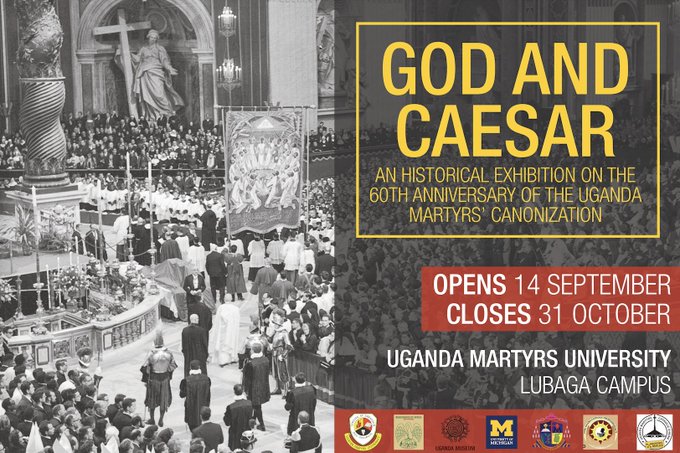
He added: “For us in Uganda, this return of the first-class relics to their native land is a cause for joy, for the Uganda Martyrs are our people, sons of our soil and fathers of our faith. For us in Africa, the return of the Uganda Martyrs’ mortal remains affirms our people’s central role in the making of the Christian faith.
The Theme
The God and Caesar exhibition comes at a time when the global conversation around the repatriation of cultural and religious artifacts from Western institutions to their places of origin is gaining momentum. Uganda’s effort to reclaim the relics of the Martyrs serves as a model for other countries seeking to restore their historical and religious heritage. By bringing these sacred objects back to the land where the Martyrs lived and died, the exhibition affirms the importance of Uganda’s role in the global Christian narrative.
In the words of Professor Nicholas Thomas, Director of the Museum of Archaeology and Anthropology at the University of Cambridge, who has been involved in similar projects, “The return of heritage of exceptional significance… provides a model for similar initiatives elsewhere in Africa, and indeed elsewhere in the world.”
This exhibition not only commemorates the lives of the Uganda Martyrs but also serves as a beacon for other African nations to reclaim their historical narratives, offering a renewed sense of ownership over their cultural and spiritual legacies.
For Uganda and Africa as a whole, the God and Caesar exhibition is an extraordinary occasion that brings history, faith, and scholarship together. It is a reminder of the resilience of the Uganda Martyrs and the lasting impact of their sacrifice on the nation’s religious and cultural identity.
By reconnecting with their relics, Uganda continues celebrating its rich spiritual heritage while contributing to the global dialogue on decolonization and restitution.
About the Relics
For more than half a century these consequential signs of our church’s heroic history have lain in Rome, where they were taken during the decades-long process by which the church made these young Ugandans into saints.
Charles Lwanga, Mathias Mulumba, and 20 of their compatriots were martyred in and around Namugongo between 1885 and 1887. The church began collecting evidence to support their canonization shortly after their deaths.
Dozens or hundreds of men and women who had known the martyrs gave evidence to support the cause, and the relics of the dead men, which had been salvaged after the infernos had died down, were gathered up and sent to Rome. There they have laid ever since.
The martyrs themselves were beatified in June 1920 and canonized in October 1964, but their relics have remained in the custody of the Missionaries of Africa.
For updates on today’s event, please follow the hashtag #UgandaMartyrsExhibition via our X handle @ResearchFindsUG
About The Author
Arinaitwe Rugyendo
Rugyendo is the Founder and Editor-in-Chief of ResearchFinds News. He’s an accomplished journalist with a rich background in the media industry in Uganda. With over two decades of experience, Rugyendo has held various roles including cab reporter, Bureau Chief, Managing Editor, and Digital Media Editor at renowned publications such as Daily Monitor and Red Pepper. Throughout his career, he has demonstrated a commitment to delivering high-quality journalism and staying at the forefront of media trends. In addition to his journalistic pursuits, Rugyendo is currently pursuing a Ph.D. in Journalism and Communication at Makerere University. He has been recognized for his outstanding leadership and commitment to social change as a Desmond Tutu Fellow and Crans Montana New Leader. Rugyendo also serves as the Chairman of Young Engineers Uganda and Uganda Premier League, showcasing his dedication to promoting excellence and growth in various fields. With a passion for driving innovation and pushing boundaries in media, Rugyendo continues to make significant contributions to the industry. His vast experience, academic pursuits, and leadership roles make him a respected figure in the Ugandan media landscape.

